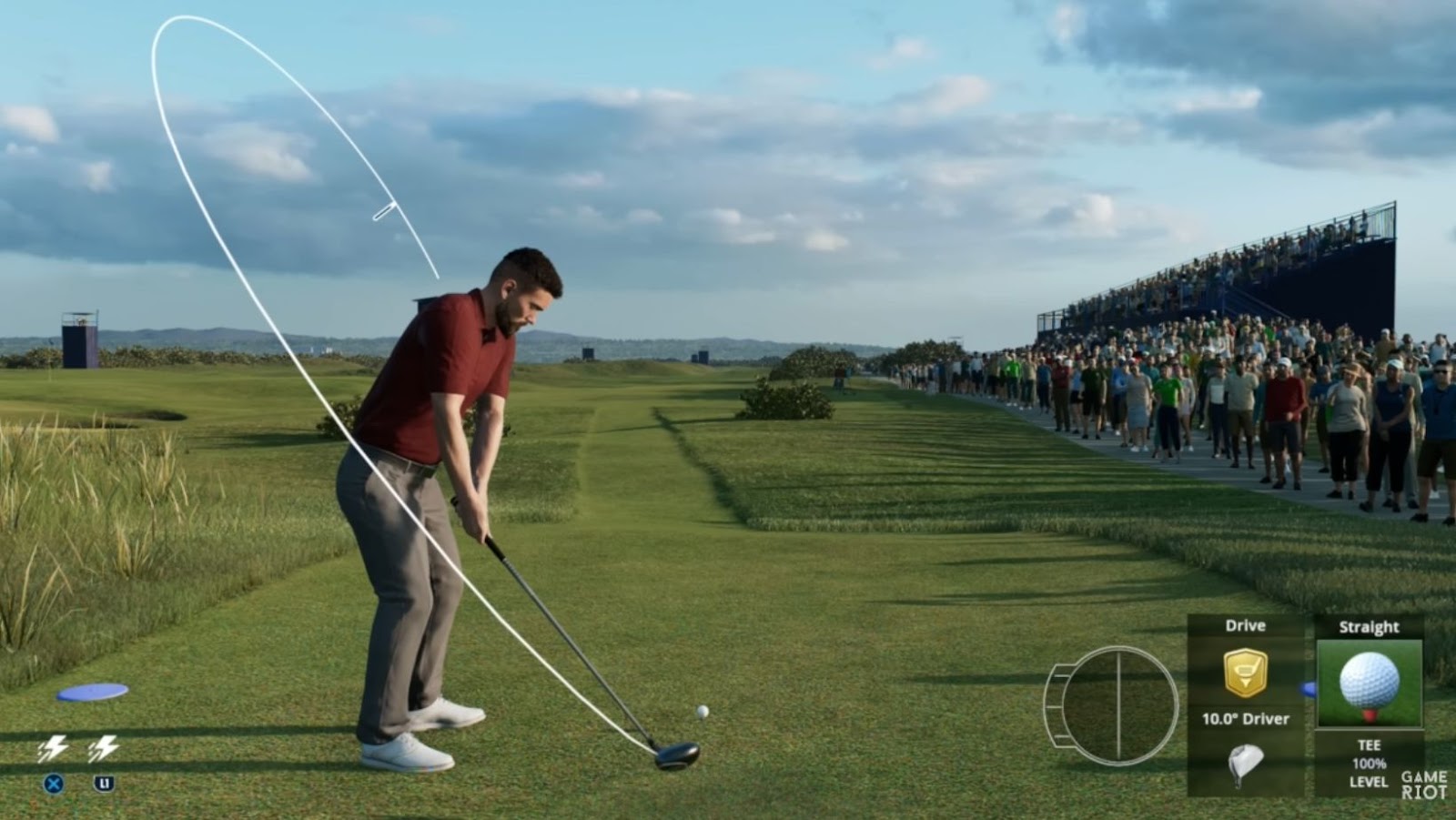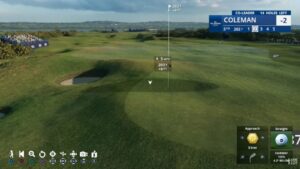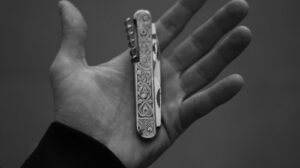What Clubs To Have In Your Bag EA Sports Rory Mcilroy PGA Tour
To optimize your performance in golf, it is important to carefully consider what clubs to carry in your bag. In order to navigate the decisions involved, we will cover the basics of club selection and factors to consider when deciding on the number of clubs. These sub-sections will provide solutions for any level of golf experience.
The basics of club selection
When it comes to choosing which clubs to carry in your golf bag, there are important factors to consider. These include your ability level, course conditions and layout, and personal preference. The right mixture of clubs will depend on these variables, with most players carrying a driver, fairway woods, irons, wedges, and a putter.
The type of player you are can also impact your club selection. Beginners may benefit from carrying more forgiving clubs while advanced players may opt for more specialized options. Additionally, the length and weight of each club should be considered in relation to your swing speed and strength.
It is important to remember that carrying too many clubs can become cumbersome and affect your performance. As a general rule of thumb, carrying 14 or fewer clubs is recommended by the United States Golf Association (USGA).
Interestingly, the limit on the number of clubs allowed in a player’s bag was not always 14. In fact, prior to 1938 there was no limit on how many clubs could be carried during a round. It wasn’t until USGA rules were standardized that the current limit was established.
Deciding how many clubs to carry is like deciding how many toppings to put on a pizza – you don’t want to overdo it, but you also don’t want to be left wanting more.
Factors to consider when deciding on the number of clubs
When it comes to selecting the appropriate number of clubs in a golf bag, various factors come into play. Here, we’ll explore critical elements for determining which clubs best suit your game.
- Playing Style – The number of clubs you carry should mirror your playing style and approach to the game. Players with aggressive playing styles would opt for more specialized wedges while those who prefer a conservative approach might choose fewer ones.
- Golf Course – The type of golf course you’ll be playing on must also factor in how many clubs you need. A course with longer holes and more open spaces calls for extra irons and woods, while shorter courses can’t demand that much.
- Skill Level – The skill level and experience play a pivotal role in the selection of golf clubs. Beginners may find that fewer options help them focus their strokes while experienced players will want to add specialized options to fine-tune their games’ precision.
Additionally, considering weather, terrain conditions, and personal physical limitations like age or injury can help modify certain types of clubs’ weights or lengths.
When selecting the number of clubs to include in your bag, individuals must personalize it based on their unique requirements geared toward enhancing their strengths and reducing weaknesses. To aid this decision-making process and create better outcomes on the course, players should be willing to experiment with different numbers or configurations before settling on an ideal mix.
Don’t miss out on optimizing your game by ignoring club selection’s importance! Be intentional about choosing which ones best cater to your needs and provide maximum versatility across the round’s range to become your best version on the green.
Learning golf club types is like a crash course in geometry, except with a lot more frustration and a lot less pizza.
Understanding the different types of clubs
To understand the different types of clubs and what clubs to have in your bag for EA Sports Rory McIlroy PGA Tour, you must explore the benefits of wood clubs, iron clubs, wedges, and putters. In this section, we’ll introduce these sub-sections briefly to help you gain a deeper understanding of the various clubs available and their unique purposes on the golf course.
Wood clubs
Modern driver clubs with larger clubheads are designed for longer drives and allow golfers to achieve more distance. These clubs are referred to as ‘distance clubs’ or ‘powerful woods.’ The following are the key features of these woods:
- They have larger sweet spots, making it easier to hit the ball squarely.
- They are generally made of lightweight materials such as graphite and titanium, making them easy to handle.
- They have lower lofts than traditional driver woods resulting in a decreased spin rate and higher launch while ensuring more distance.
Pro Tip: When using a wood club, keep your stance shoulder-width apart and ensure that your weight is on the balls of your feet.
Iron clubs: Because sometimes hitting the ball with a giant metal stick just feels better than therapy.
Iron clubs
- Irons provide accuracy and control for approach shots to the green.
- They come in a range from 2-iron to Pitching Wedge or higher.
- The lower numbered Irons have smaller heads and flatter faces, creating less high trajectory for long-distance shots.
- The higher numbered Irons have more diverse angles, making them ideal for playing different types of shots around the green.
- Irons with bigger heads, cavity backs, and perimeter weighting offer much-needed forgiveness for mid-to-high handicappers.
While traditional sets usually feature a combination of iron numbers, some players opt to carry just one or two irons in their bags.
As individual swings vary considerably across golfers, selecting the correct set of irons can make all the difference when trying to improve shot-making skills.
Pro Tip: If you are new to golfing or looking to optimize your game further, aim for larger iron heads and perimeter weighting as they offer greater stability and better ball flight.
Slicing a ball with a wedge may be embarrassing on the course, but at least it’s not as bad as slicing a bagel with a chainsaw.
Wedges
For golfers, certain clubs can make all the difference in their game. One of these crucial types of clubs is known as Special Use Irons. These uniquely designed clubs are called Wedges due to their shape and angle, which create a steep trajectory when hitting the ball.
- Wedges come in several varieties like pitching wedges, gap wedges, sand wedges, and lob wedges.
- Pitching wedges have a loft of around 45 degrees.
- Gap wedges are used for shots that require more accuracy than distance and have lofts between 46-54 degrees.
- Sand wedges are made specifically for use from bunkers or sandy terrain and have a loft between 54-58 degrees.
- Lob wedges are designed for high-arcing shots with lofts above 60 degrees
- Wedges require some level of skill to master and should be used only when necessary
It’s important to note that using too much force with these specialized clubs can cause the ball to overshoot its targeted distance, leading to poor performance outcomes. Golfers should also take into consideration the different terrains they will be playing on as this can impact which type of wedge will be most effective. Pro Tip: When trying to determine which wedge is best suited for your next shot, consider both the distance required and the obstacles that may lie ahead. Consistent practice with each wedge type will help you develop a better understanding of their nuances and thus help improve your shot-making abilities on the golf course. If putting was a person, they would definitely be the friend that always promises to show up but never quite follows through.
Putters
For a golfer, the tool that can make or break their game is the club. When it comes to clubs used for putting, they are known as ‘flat sticks’. These clubs are called so because of their lack of loft and the way they glide across the green.
The club size, weight, and design matters a lot while choosing a putter. There are various types of putters available, like blade putters, mallet putters, crossover putters, and many more. Blade putters are the most traditional option with a simple design offering greater feel and precision on short putts. Mallet putters have large backs which provide higher MOI and stability during impact, best suited for longer distances.
Here’s an example of what this table would look like:
| Putter Type | Design | Use |
| Blade Putters | Thin Head & Shaft | Greater Feel & Precision on Short Putts |
| Mallet Putters | Large Backs & Weighted Soles | Higher MOI & Stability During Impact for Longer Distances |
| Crossover Putters | A Blend Between Blade & Mallet | Best Suited for Players who Require Maximum Flexibility |
It’s important to choose wisely when it comes to selecting the right club for you as each type has its unique advantages that complete your golfing experience.
While choosing a putter is all about balancing accuracy and personal preferences in terms of grip comfortability etc., it’s also essential not to overlook external factors like wind speed and slope angles that can make or break one’s game. At times perfect shots missed due to slightly incorrect angle estimation can be quite disappointing.
Once an Olympics golf medal winner shared his story saying that he followed his dream of holding an Olympic medal since childhood; practicing relentlessly and pursuing it until he won one. He acknowledged how his journey was filled with its ups and downs but keeping oneself motivated towards it can lead to achieving great success in the end.
Make sure to have a variety of clubs in your bag for the game, unless you want to end up like your real-life golf game – in the water.
What clubs to have in your bag for EA Sports Rory McIlroy PGA Tour
To optimize your club selection in EA Sports Rory McIlroy PGA Tour, you need to know what clubs to have in your bag. Course selection and club choices, adapting to different course conditions, and tips for optimizing your club selection in the game are key sub-sections to help you achieve this.
Course selection and club choices
When it comes to optimizing your in-game performance in EA Sports Rory McIlroy PGA Tour, having the right gear is crucial. Here are some tips for maximizing your Course and Club choices.
- Pick courses that align with your playstyle and club preferences. Consider factors like distance, weather conditions, and hazards when selecting a course.
- Carry a balanced set of clubs that cover all the necessary ranges and shots. Include drivers, fairway woods, hybrids, irons, wedges and putters for full versatility.
- Experiment with different club configurations to find what works best for you. Some players prefer carrying two drivers for variety or swapping fairway woods for hybrids depending on the terrain.
Remember that every player has their own unique style and preference. Try out different strategies to see what works best for you.
Pro Tip: Don’t be afraid to switch up your club selection mid-round if things aren’t going well – sometimes all it takes is a fresh perspective to turn things around.
If the weather is as unpredictable as your golf game, make sure to have a variety of clubs in your bag to adapt and conquer any course conditions.
Adapting to different course conditions
When playing EA Sports Rory McIlroy PGA Tour, it’s vital to have the right clubs in your bag, especially when considering different course conditions. Understanding how to adapt to varying course conditions can make a significant difference in your gameplay.
For instance, suppose you’re playing on a windy day with narrow fairways that require more precision shots. In that case, you may need to use clubs with higher lofts or a slightly shorter shaft for better control. Additionally, on a water hazard-heavy course, selecting clubs such as hybrids and long irons could provide more distance while still maintaining accuracy.
It’s worth noting that paying attention to your club selection can make all the difference between poor and impressive rounds of play. Knowing which club is best suited for particular conditions is crucial as different courses present their unique challenges and opportunities.
I once played on a course where the grass was particularly thick, which made it difficult to get my ball airborne. I had to use high-lofted wedges and longer irons to hit the ball clean out of the rough consistently. By adapting my club selection based on that condition, I managed to add some much-needed points onto my scorecard.
In summary, selecting the right clubs based on the prevailing conditions is an essential part of any successful round of golf in EA Sports Rory McIlroy PGA Tour. With practice and understanding of when and how different clubs work best under various circumstances, improvement is always possible irrespective of whatever course lies ahead!
Choosing the right club in the game is like choosing the right partner – it takes patience and a lot of trial and error.
Tips for optimizing your club selection in the game
Here, we will explore the best ways to choose clubs in EA Sports Rory McIlroy PGA Tour. Using advanced techniques, you can optimize your club selection and improve your game.
Here are five tips to optimize your club selection:
- Consider the distance to the hole
- Take note of the course features
- Factor in the wind conditions
- Adjust for lie and slope of the ground
- Select clubs based on your unique playing style
When choosing which club to use, you should also consider factors such as ball spin and accuracy ratings. By taking all these elements into account, you can improve your gameplay drastically and win more tournaments.
One essential aspect is selecting clubs that complement your playing style. A player focused on power play might want to choose drivers with higher impact ratings, while a skilled putter may look for clubs with high accuracy rating.
On a personal note, I found my gameplay improved dramatically when I made sure always to select adjustable hybrids in EA Sports Rory McIlroy PGA Tour. These versatile clubs helped me no matter what situation or distance I was facing from the tee. Ultimately each player needs to identify their strengths and weaknesses and adjust their game accordingly,” said John, one of our avid gamers who’s been playing since 2014.



